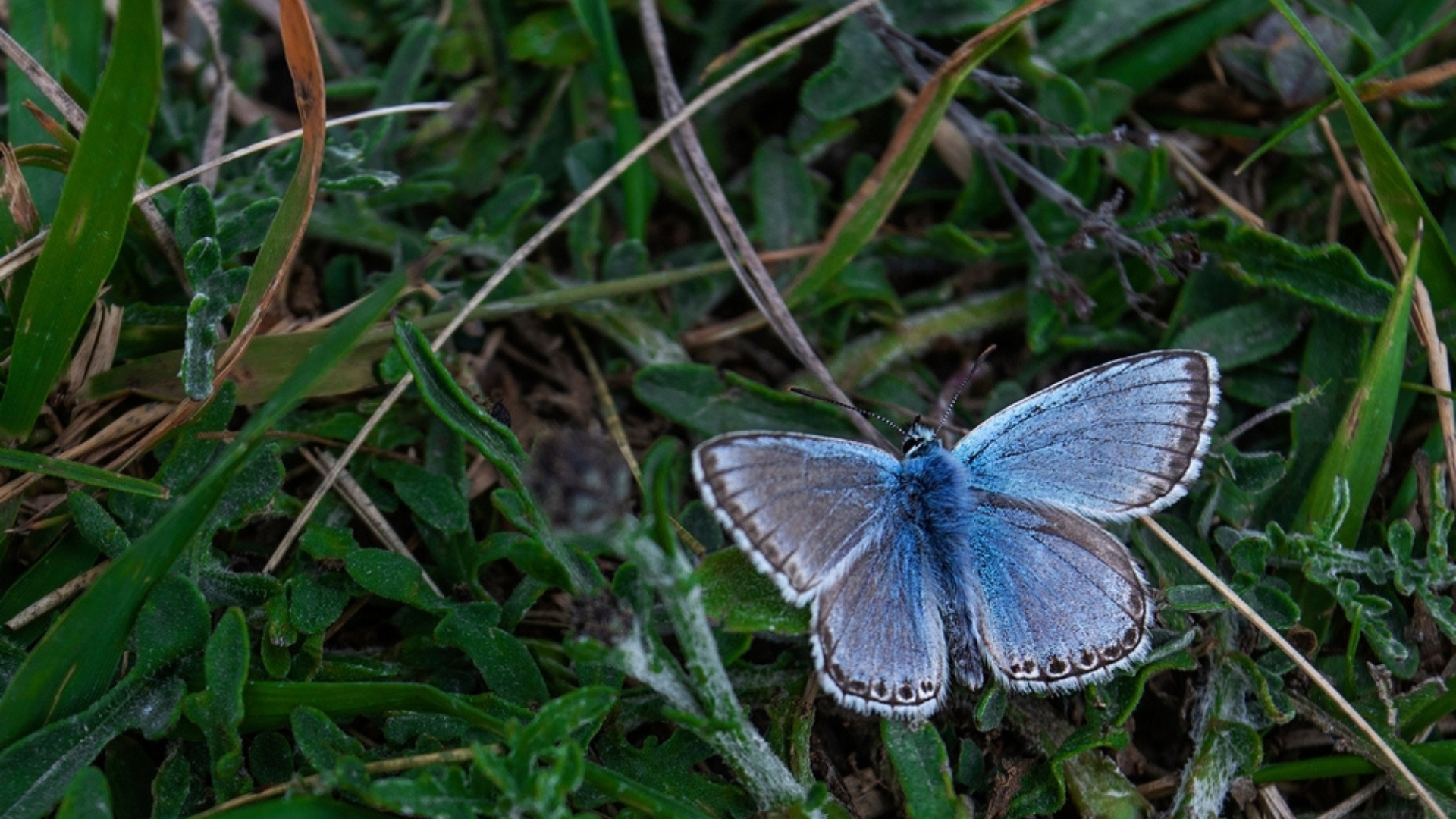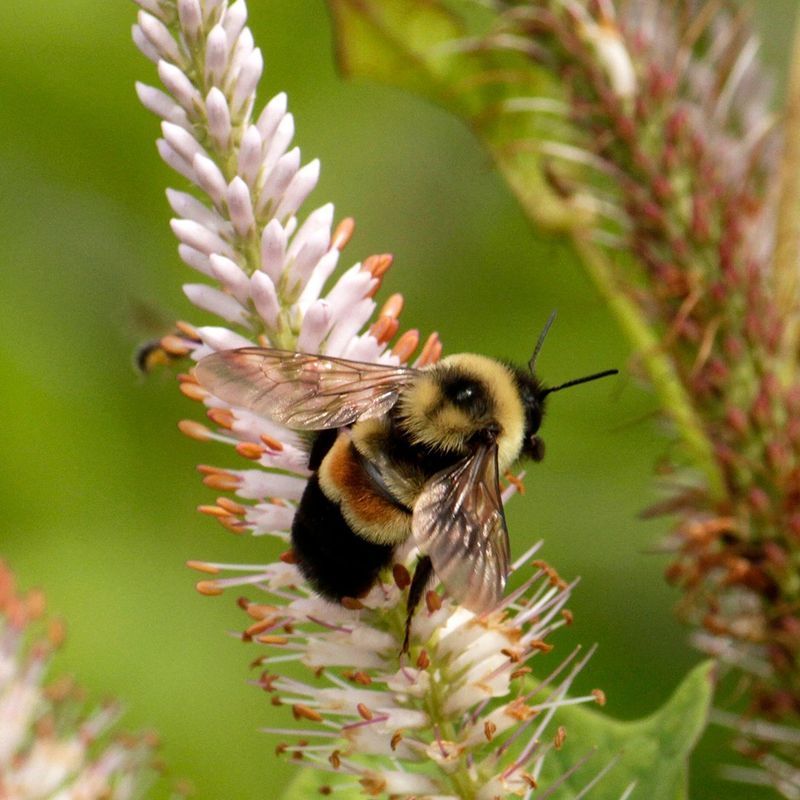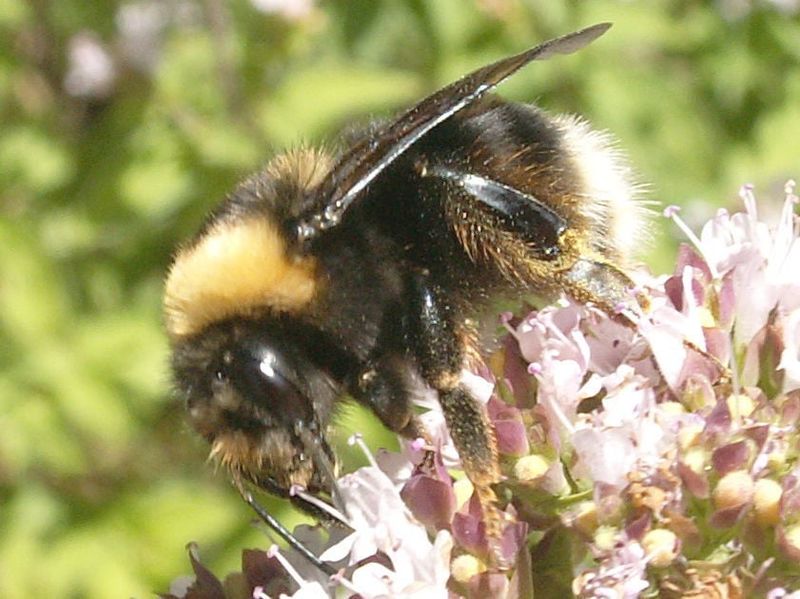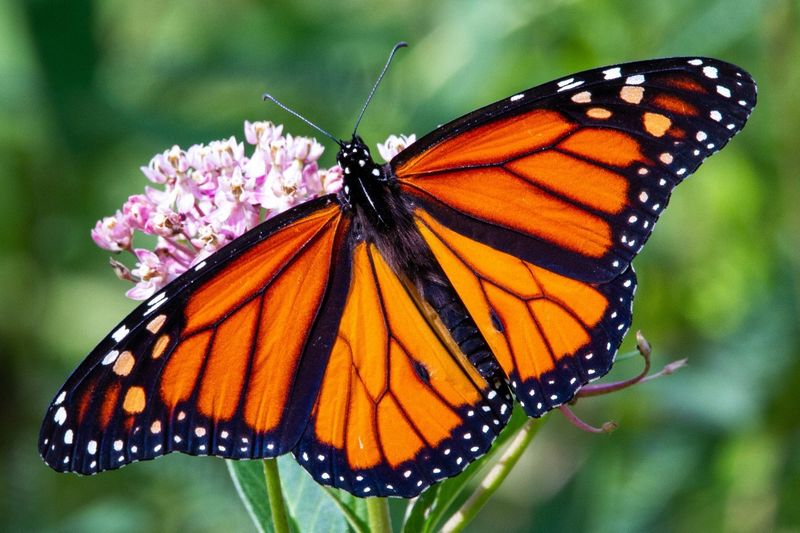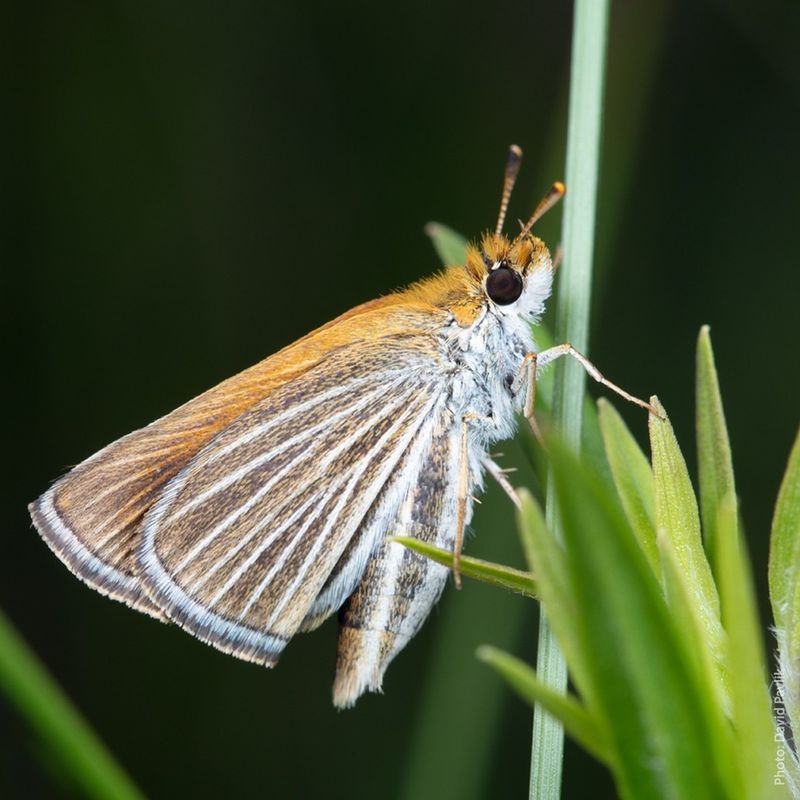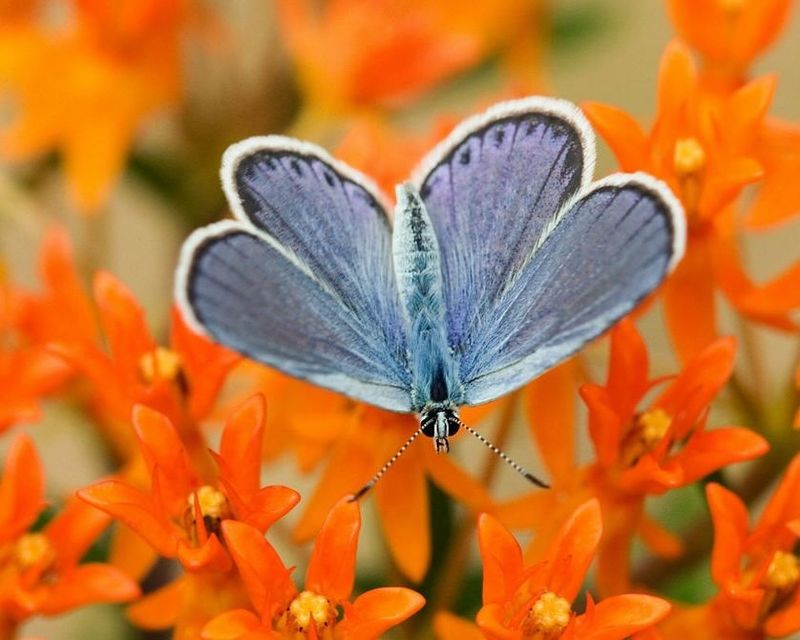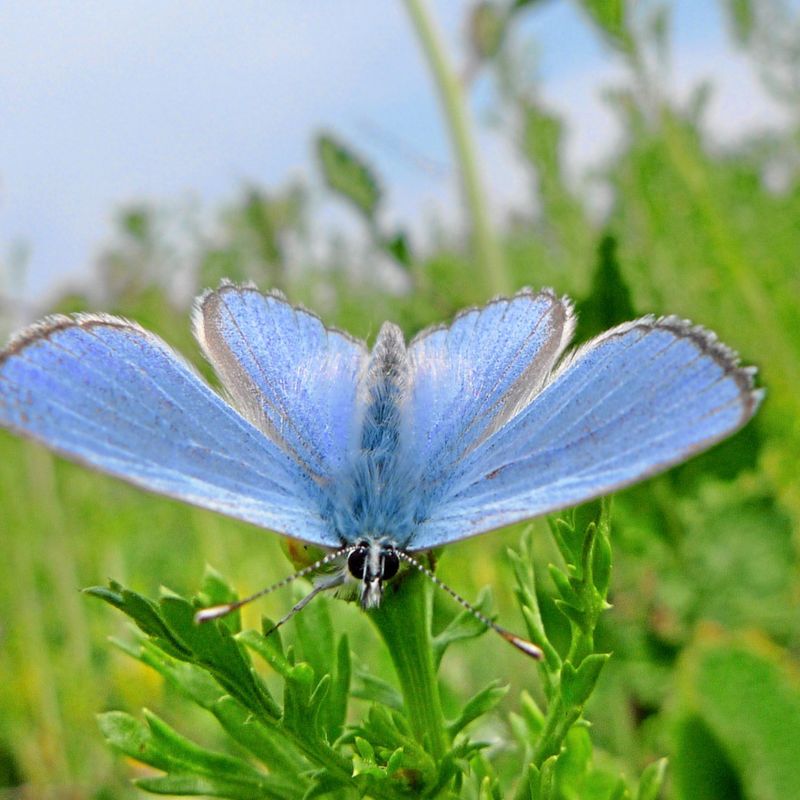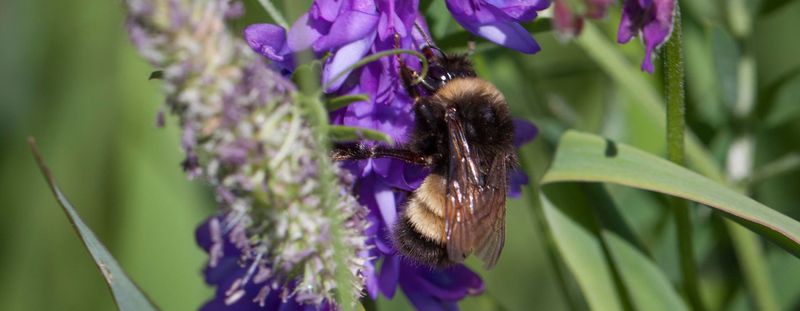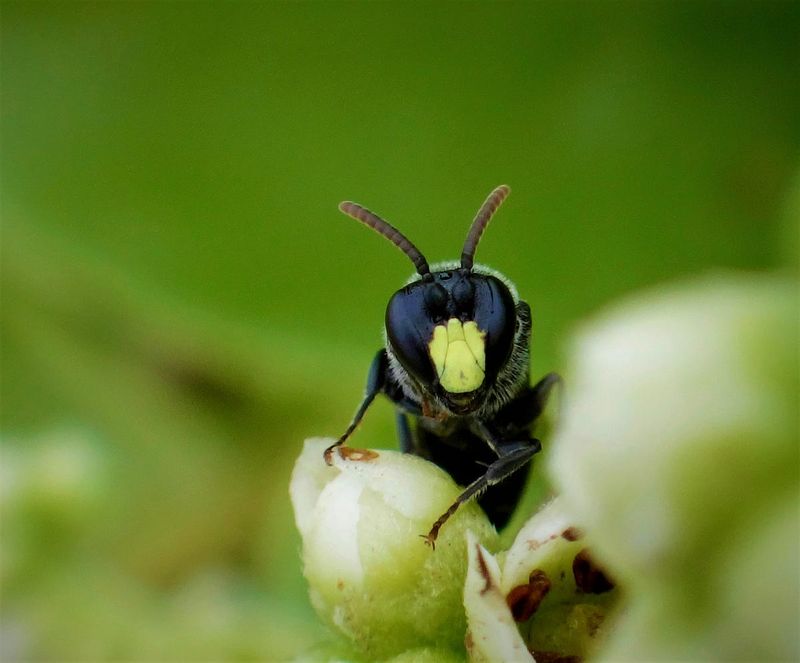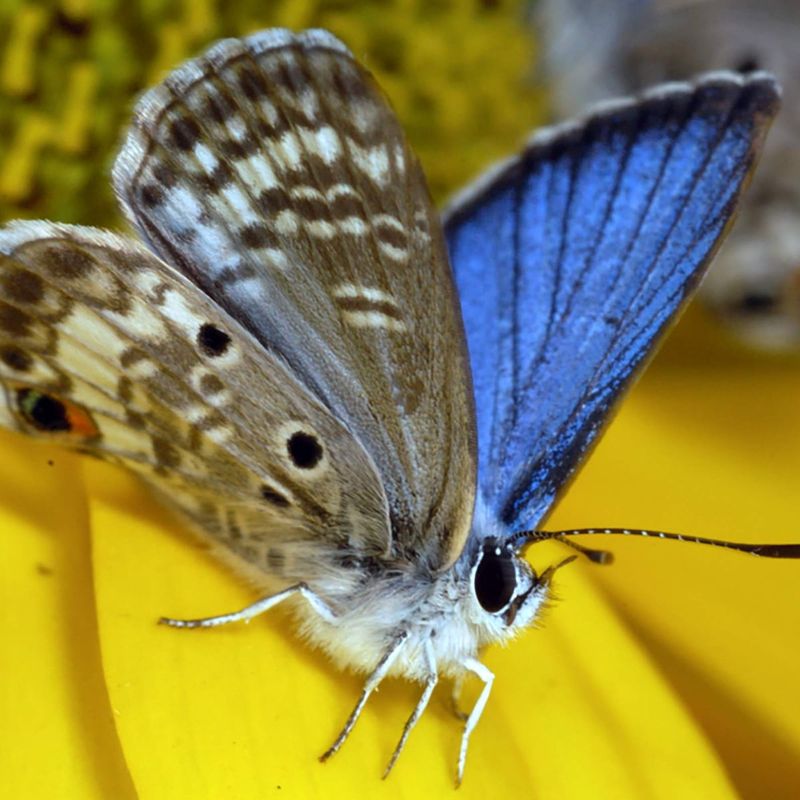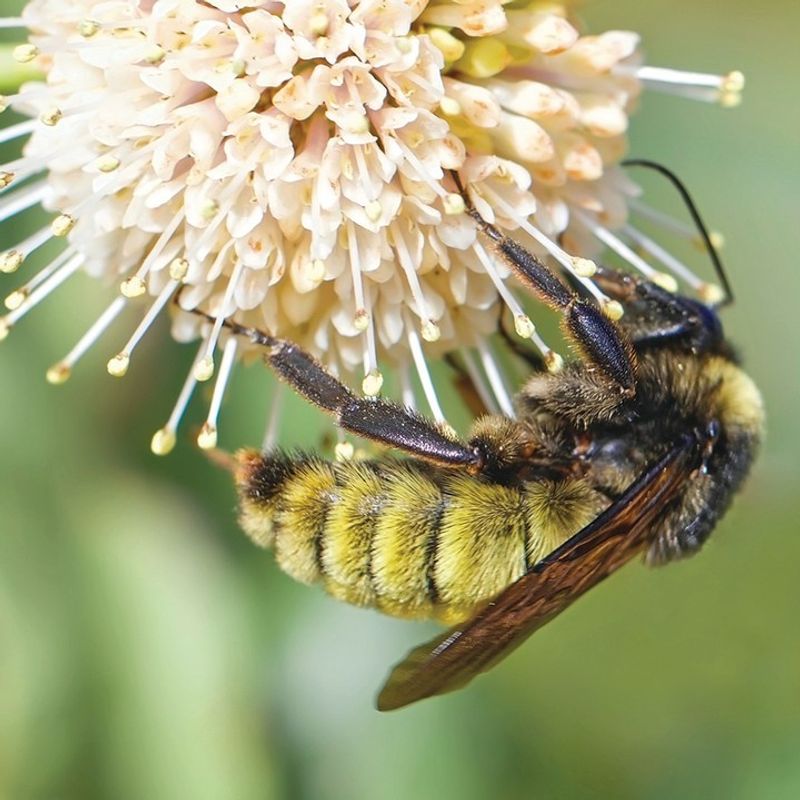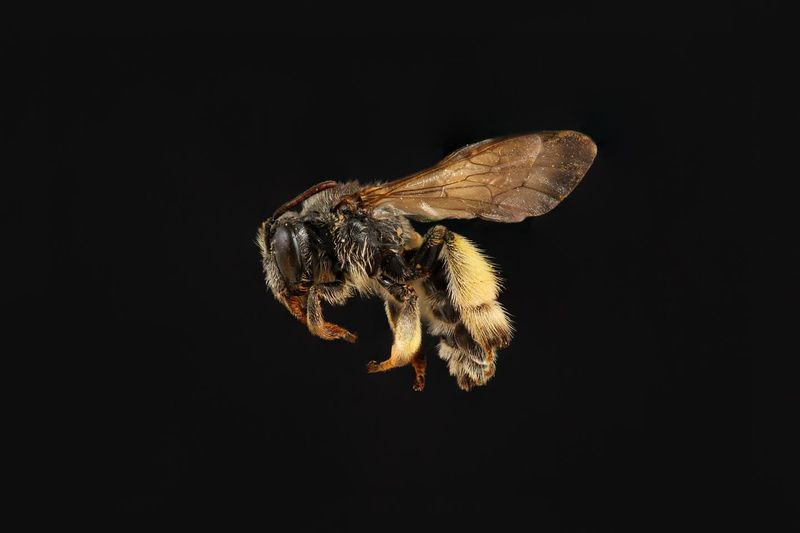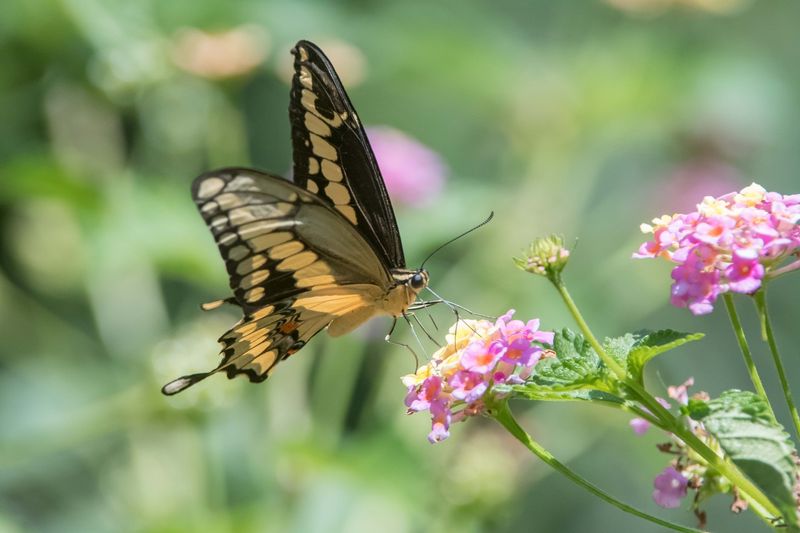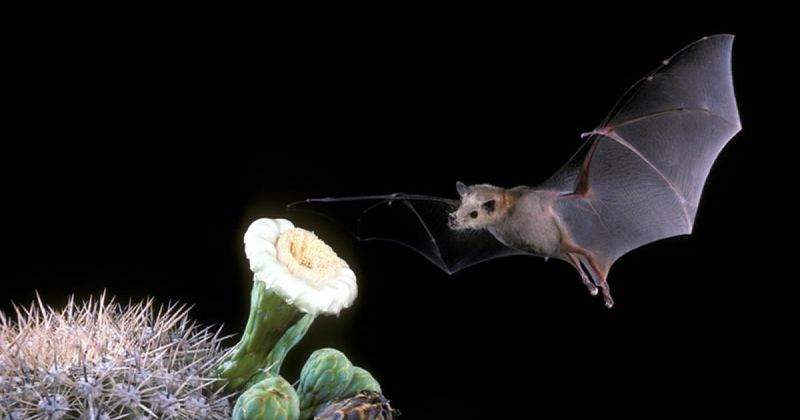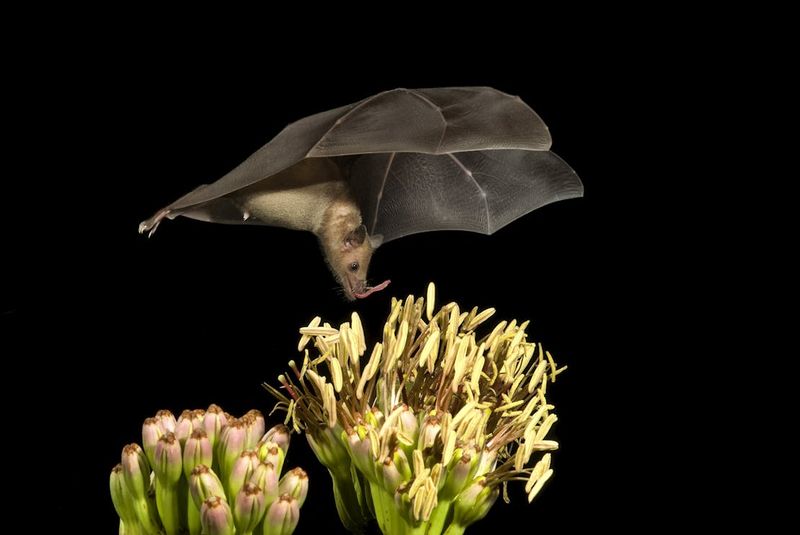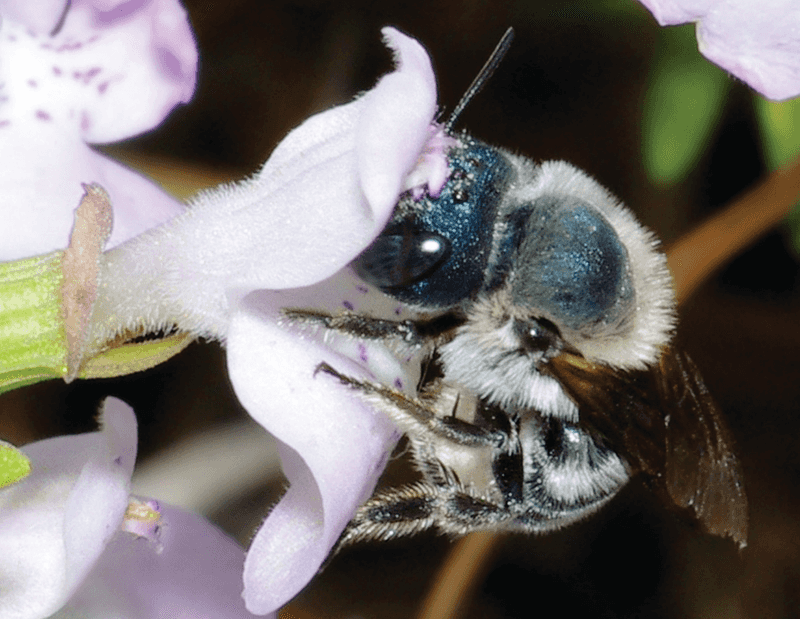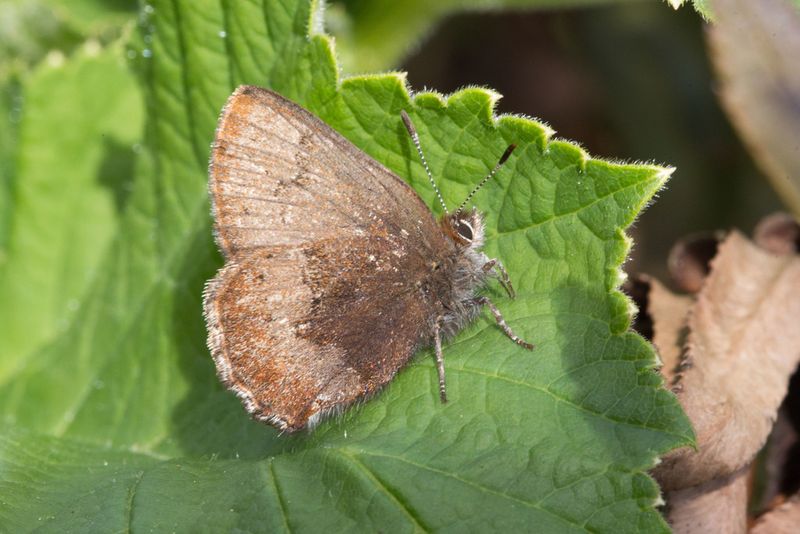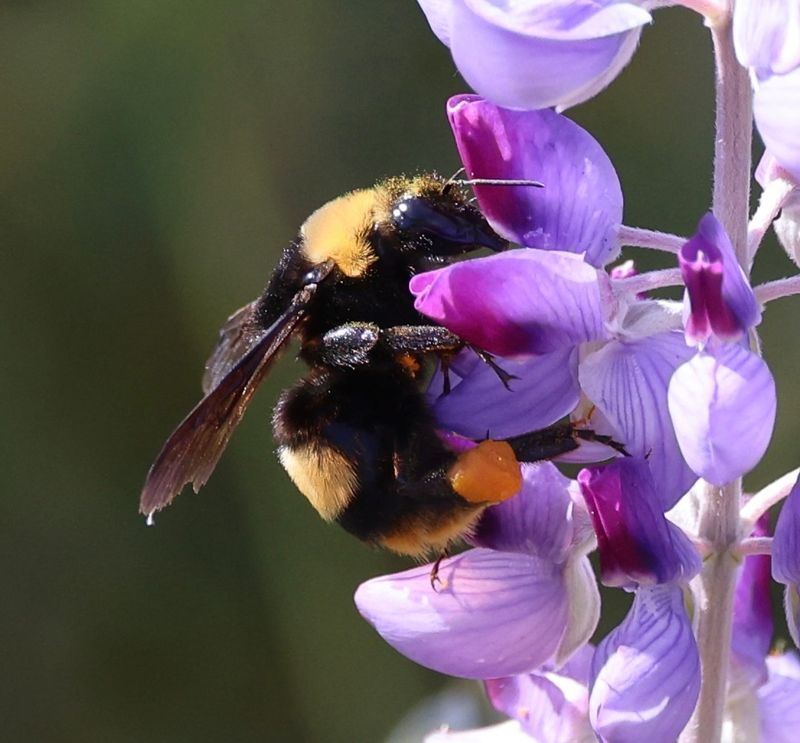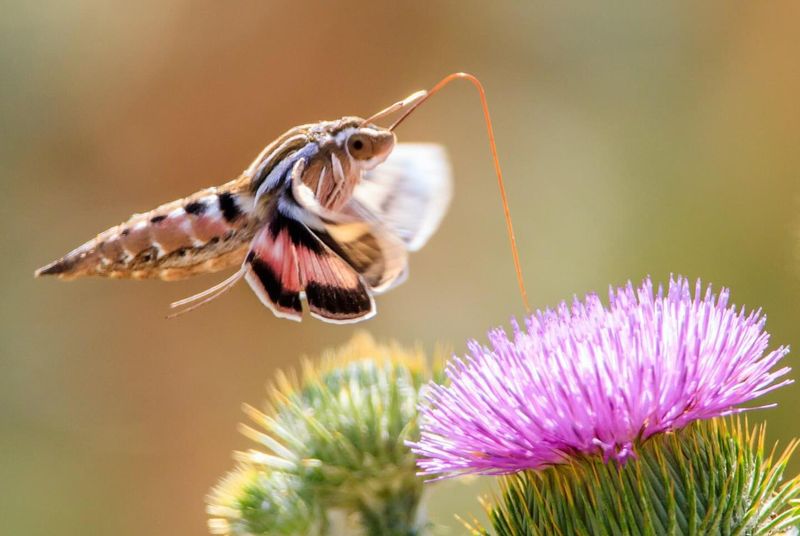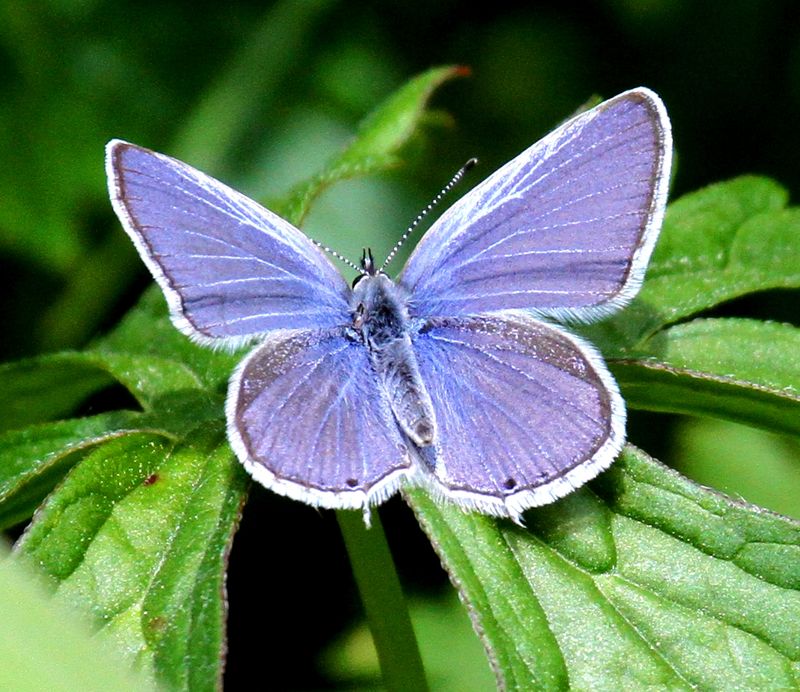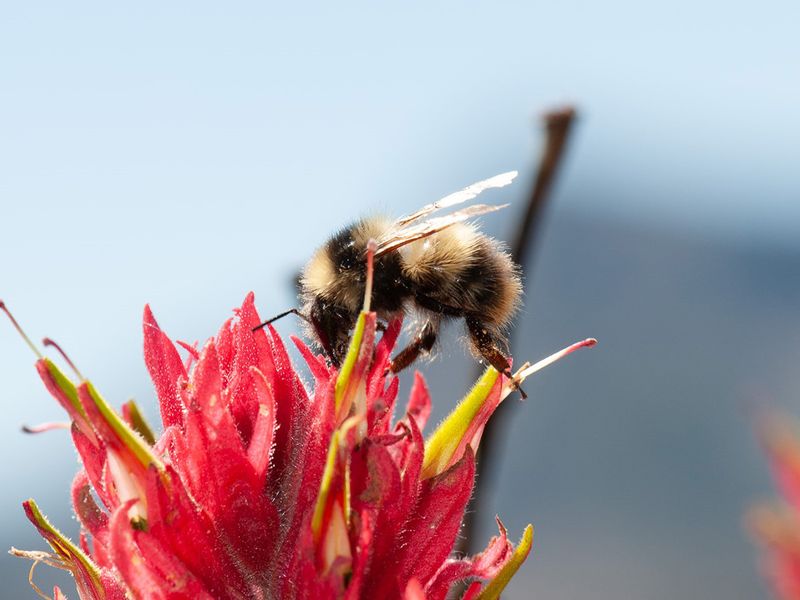Our gardens can be more than beautiful spaces – they can become lifelines for struggling pollinators. These incredible creatures pollinate about 75% of the world’s flowering plants and crops that feed us. Many pollinator populations are crashing due to habitat loss, pesticides, and climate change. By making small changes to your garden, you can create a sanctuary that helps these essential creatures survive and thrive.
1. Rusty Patched Bumblebee
Once abundant across 28 states, this fuzzy pollinator has declined by a staggering 87% in recent years. The distinctive rust-colored patch on its back makes it easy to identify.
Plant native wildflowers like bee balm, wild lupine, and asters that bloom from spring through fall. Create undisturbed areas with leaf litter where queens can hibernate. Avoid all pesticides, even organic ones, as they’re particularly sensitive to these chemicals.
2. Franklin’s Bumblebee
Possibly extinct, this rare bee was only found in a small area spanning southern Oregon and northern California. Last spotted in 2006, scientists haven’t given up hope of rediscovery.
Growing native flowering plants from the Pacific Northwest might help any remaining populations. Focus on plants like camas, penstemons, and manzanita. Leave some bare ground for nesting sites and maintain natural meadow areas with minimal disturbance.
3. Western Monarch Butterfly
These iconic orange and black travelers have declined by over 99% since the 1980s. Their epic migration spans generations and thousands of miles between Mexico and the western United States.
Plant milkweed varieties native to your region – it’s the only plant monarch caterpillars can eat. Add nectar plants like zinnia, sunflower, and verbena for adults. Avoid tropical milkweed as it can disrupt migration patterns and spread disease. Create butterfly puddling areas with damp sand and salt.
4. Poweshiek Skipperling
This small, tawny-orange butterfly has vanished from 96% of its prairie habitat. Once common across the Midwest, fewer than 500 may remain in the wild.
Preserve and restore native prairie grasses, especially prairie dropseed and little bluestem where females lay eggs. Avoid burning or mowing entire habitats at once – leave refuge areas. Partner with local conservation groups to obtain seeds of specific host plants like mat muhly grass.
5. Karner Blue Butterfly
With wings spanning just an inch, this delicate beauty depends entirely on wild lupine to survive. Made famous by author Vladimir Nabokov, it’s now found in just a handful of locations.
Grow patches of wild blue lupine in sandy, well-drained soil with full sun. This butterfly’s caterpillars eat nothing else! Add complementary nectar plants like New Jersey tea and butterfly weed. Remove invasive species that crowd out lupine, and avoid using fertilizer near these nitrogen-sensitive plants.
6. Palos Verdes Blue Butterfly
Once thought extinct, this tiny, iridescent blue miracle was rediscovered in 1994. Its entire global range is limited to a few small areas in Los Angeles County.
Plant deerweed and locoweed, the only two host plants for its caterpillars. Create sunny, open areas with minimal shade as they prefer warm conditions. Join local restoration efforts if you live in Southern California, or support conservation groups working to protect their limited habitat.
7. Yellow-Banded Bumblebee
Recognizable by its distinctive yellow band across the abdomen, this once-common bee has declined by nearly 90% since the 1990s. It’s specially adapted to cool northern climates from the Northeast to Alaska.
Cultivate early spring bloomers like willow, blueberry, and wild geranium. Add summer flowers like goldenrod, aster, and Joe-Pye weed. Create nesting habitat by leaving areas of unmowed grass and leaf litter. Their queens often repurpose abandoned rodent burrows for colonies.
8. Hawaiian Yellow-Faced Bee
Native to Hawaii, these specialized bees were the first bees ever added to the endangered species list. Seven species face extinction due to habitat loss, invasive plants, and development.
Plant native Hawaiian coastal plants like naupaka, ‘ilima, and beach morning glory if you live in Hawaii. Remove invasive species that crowd out native vegetation. Support local conservation efforts focused on coastal dune restoration, as these bees often nest in hollow plant stems and small cavities in coral rubble.
9. Miami Blue Butterfly
With fewer than 100 individuals remaining, this dime-sized butterfly clings to existence in the Florida Keys. Once found throughout coastal Florida, it’s now one of America’s most endangered insects.
Plant nickerbean and blackbead – the host plants for caterpillars. Add nectar sources like Spanish needles, scorpion tail, and wild sage. If you live outside Florida, support conservation organizations working to protect this species. Their recovery depends on preserving specific coastal habitats.
10. American Bumblebee
With its distinctive black and yellow striped pattern, this once-abundant bee has disappeared from eight states and declined by 89% in just 20 years. Agricultural intensification and pesticide use have hit this species particularly hard.
Create meadow gardens with clover, sunflowers, and native thistles – some of their favorite food sources. Leave areas of bare ground and abandoned rodent holes for nesting sites. Avoid tilling garden soil in spring when queens are establishing colonies.
11. Macropis Cuckoo Bee
This rare specialist bee has a fascinating lifestyle – it’s a “cuckoo” that lays eggs in the nests of oil-collecting bees. When the eggs hatch, the larvae eat the pollen stores collected by the host bee.
To help both the cuckoo bee and its host, plant yellow loosestrife (not to be confused with invasive purple loosestrife). The host bees collect oils from these flowers instead of pollen. Create diverse habitat with undisturbed areas for nesting. Avoid mulching every inch of your garden.
12. Giant Swallowtail Butterfly
North America’s largest butterfly sports striking black wings with yellow spots and can measure up to 6 inches across. While not endangered everywhere, many populations are declining due to citrus industry pesticides.
Plant rue or citrus trees (like lemon or lime) as host plants for their caterpillars. Add nectar sources like lantana, milkweed, and zinnias. Avoid pesticides on citrus plants – the spiky caterpillars resemble bird droppings and won’t harm your trees. Create butterfly puddling areas with damp sand.
13. Lesser Long-Nosed Bat
These remarkable night-shift pollinators have foot-long tongues relative to their body size! They’re crucial for pollinating agave, saguaro cacti, and other desert plants.
Plant night-blooming natives like agave, organ pipe cactus, and saguaro if you live in the Southwest. Install a bat house away from bright lights. Reduce outdoor lighting during migration seasons (April-May and September-October). Leave hummingbird feeders out overnight with a ratio of 4:1 water to sugar.
14. Mexican Long-Tongued Bat
Master hoverers that feed like hummingbirds, these nectar-feeding bats are vital pollinators for many southwestern plants including agave used for tequila production. Their populations are declining due to habitat destruction and cave disturbance.
Plant evening-blooming flowers like evening primrose, night-blooming cereus, and agave. Create water features that remain accessible at night. Install bat houses 12-15 feet high facing southeast for optimal temperature. Avoid disturbing caves or mines where they might roost during winter months.
15. Blue Calamintha Bee
Rediscovered in 2020 after scientists feared extinction, this metallic blue bee exists only in a tiny area of Florida. Its specialized diet consists almost exclusively of the endangered Ashe’s calamint plant.
If you live in central Florida, grow Ashe’s calamint and other native mints in sandy, well-drained soil. Create patches of open, sandy ground for nesting sites. Support conservation efforts to protect Lake Wales Ridge habitat. For gardeners elsewhere, growing native mint varieties helps related specialist bees.
16. San Bruno Elfin Butterfly
Restricted to just a few hills near San Francisco, this tiny brown butterfly with a one-inch wingspan faces extinction. Its caterpillars feed exclusively on stonecrop, a succulent that grows on rocky north-facing slopes.
Plant Pacific stonecrop (Sedum spathulifolium) in rocky, well-drained areas. Create microhabitats with morning sun and afternoon shade. Support conservation efforts to protect remaining habitat on San Bruno Mountain. Even gardens outside their range can serve as educational showcases for this species’ plight.
17. Crotch’s Bumblebee
Once abundant throughout California’s Central Valley and coast, this distinctive bee with a yellow face and bright orange abdomen has disappeared from much of its range. Agricultural intensification and urban development have destroyed much of its habitat.
Plant native California wildflowers like California poppy, lupine, and phacelia. Create undisturbed areas with bunch grasses where queens can establish nests. Avoid raking or disturbing leaf litter in spring when queens are searching for nesting sites. Support organic farming practices that reduce pesticide use.
18. Sphinx Moth (Certain Species)
Resembling hummingbirds in flight, these remarkable night-flying moths have specialized proboscises up to 14 inches long to reach nectar in deep tubular flowers. Several species face extinction due to habitat loss.
Plant night-blooming, fragrant flowers with tubular shapes like moonflower, evening primrose, and nicotiana. Add host plants like tomato, tobacco, and Virginia creeper for their caterpillars. Reduce outdoor lighting that disrupts their feeding patterns. Avoid pesticides on vegetable gardens where their caterpillars (hornworms) might feed.
19. Sierra Nevada Blue Butterfly
Living in high mountain meadows above 7,000 feet, this delicate blue butterfly faces threats from climate change as warming temperatures alter its alpine habitat. Its entire life cycle depends on specific mountain plants.
Support conservation efforts protecting high-elevation meadows in the Sierra Nevada range. Plant native lupines if you garden in mountain regions. Create butterfly gardens with educational signage about alpine species. Reduce your carbon footprint to help mitigate climate change impacts on fragile mountain ecosystems.
20. Morrison’s Bumblebee
Found only in the mountains of the western United States, this once-common pollinator has experienced rapid population crashes. Its short tongue specializes in extracting nectar from certain mountain wildflowers.
Plant native western wildflowers like penstemens, phacelia, and manzanita. Create undisturbed areas with bunch grasses and leaf litter for nesting. Maintain water sources with landing spots. Avoid pesticides entirely, as this species is particularly vulnerable to neonicotinoids.

